This list of picture books about protests and civil disobedience will be timely no matter when you read them, and they are a great supplement to our list of books about Martin Luther King, Jr.
Many of these books put protests and civil disobedience in historical context and are a great reminder of the way defiant actions have shaped today's society. They will help you talk to your kids about current events, and draw parallels between the present and the past.
Teaching your kids to look at all sides of an issue will help them experience compassion for others. They will understand that being a responsible citizen may sometimes require them to protest injustice.
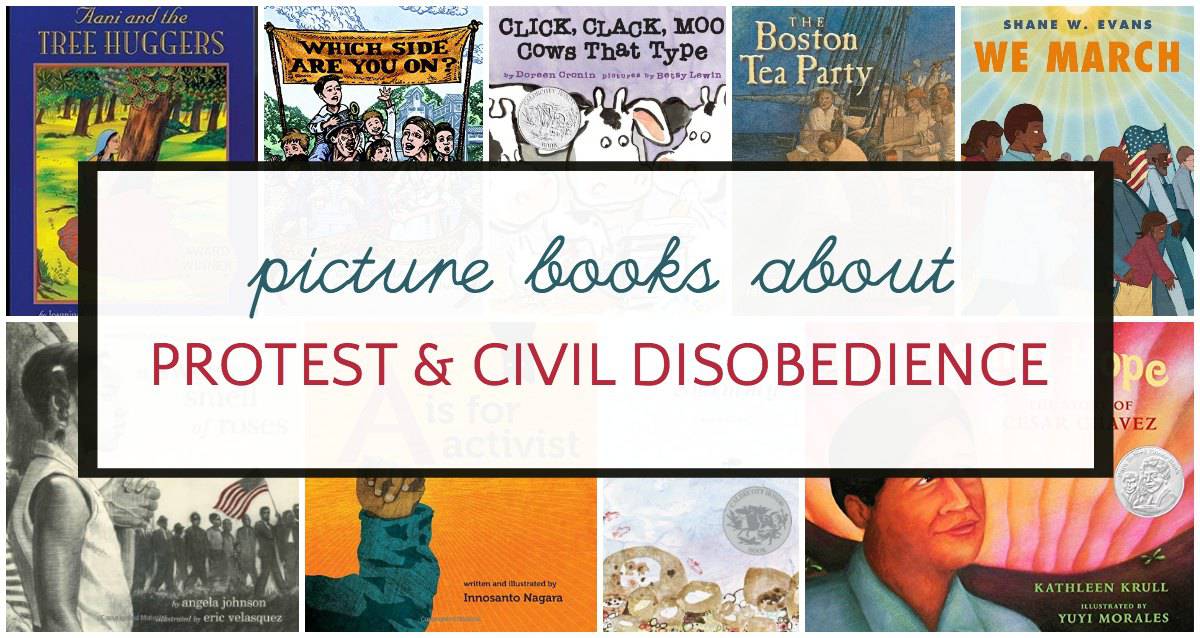
(Note: this post contains affiliate links that earn from qualifying purchases.)
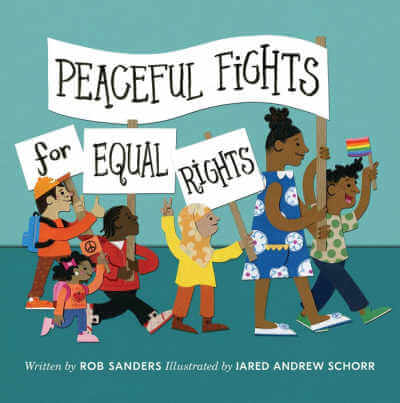
Peaceful Fights for Equal Rights by Rob Sanders, illustrated by Jared Andrew Schorr
In alphabetical order from A to Z, the author-illustrator team describes actions that thoughtful citizens can take to improve their communities, large and small. There are some allusions to historical protests like sports players taking a knee, but the simple direct text offers many opportunities to discuss the wide variety of ways people take action for what is right. Ages 4 and up.
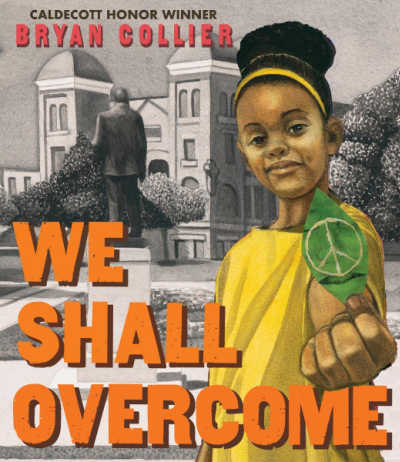
We Shall Overcome by Bryan Collier
Collier's gorgeous illustrations adorn the pages next to the lyrics of the protest song, "We Shall Overcome." The illustrations depict historical events as well as scenes of the present. Endnotes give further information about essential protests that changed the course of history. Essential reading. Ages 3 and up.
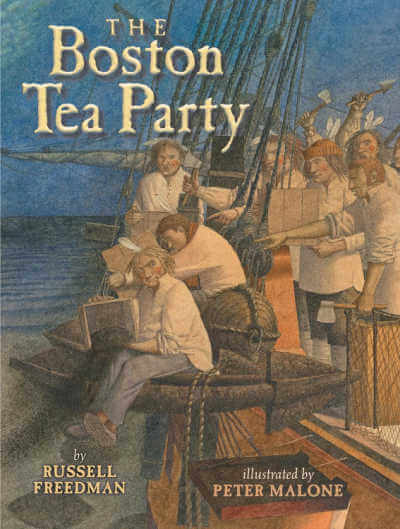
The Boston Tea Party by Russell Freedman, illustrated by Peter Malone
Find it: Amazon
Let's not forget that the United States was founded in the spirit of protests and civil disobedience. Freedman's text and Malone's illustrations will teach kids about this important historical moment. I like how Freedman's choice of words and his attention to detail give an urgency to the events and the reader is reminded again and again that the Boston Tea Party was a result of anger over a perceived injustice. Ages 7 and up.
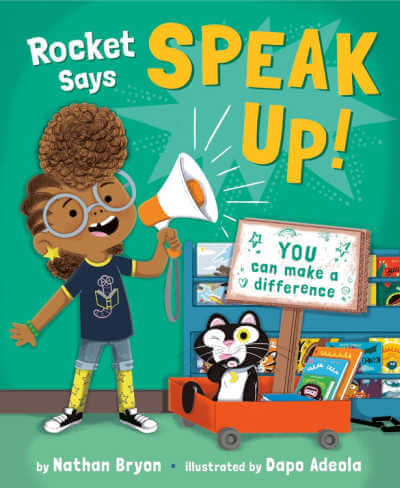
Rocket Says Speak Up! by Nathan Bryon, illustrated by Dapo Adeola
Is there any cause more important than your local library? Rocket reminds us that when a library is threatened, we must do something! Rocket is a cheerful, determined protagonist. Spurred by reading a book about Rosa Parks, Rocket organizes a peaceful protest against library closures, and others rally to her cry. Ages 4 and up.
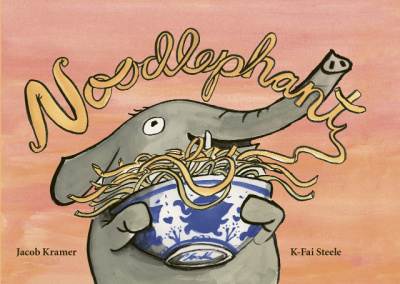
Noodlephant by by Jacob Kramer, illustrated by K-Fai Steele
Elephant loves noodles and likes having his animal friends over for pasta parties! But the kangaroos, who make all the rules and thus hold all the power declare that pasta is only to be eaten by kangaroos. They declare that the other animals should eat sticks and branches instead. This simply won't do! In protest, Elephant and his friends invent a machine that turns ordinary objects into pasta! I love the clever wordplay and the sneaky subversiveness of the non-kangaroo animals to protest the unjust law. Of course, the marvelous conclusion reaffirms that injustice and inequality must always be challenged. Be sure to read the sequel, Okapi Tale! Ages 5 and up.
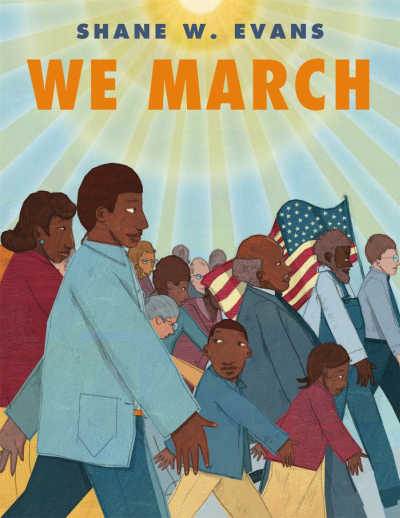
We March by Shane W. Evans
This is one of my favorite books about protest marches. The spare text and brilliant illustrations make this a wonderful book for children as young as 3 years old. The light, first person narrative tells the story of a family getting ready to participate in the March on Washington. Illustrations depict crowds of people from all walks of life and celebrate the excitement the event generated, and the power of peaceful protest. Ages 3 and up.
MORE: Children's Books about Martin Luther King, Jr.
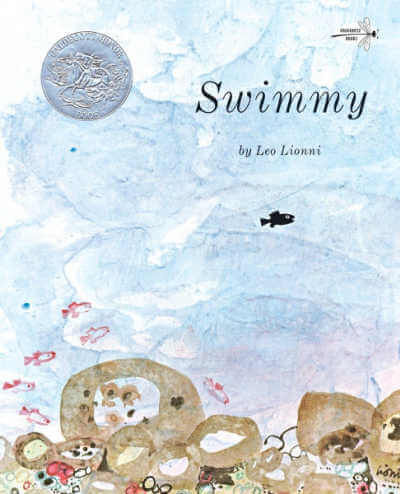
Swimmy by Leo Lionni
Swimmy is a classic picture book and you might be surprised to see it on a list of books about protest, but it fits right in. The tale is about how little fish join forces to fight off the big bully fish. However, the story also demonstrates that one can still be an individual, even when banding together with others in pursuit of a common goal. Ages 3 and up.
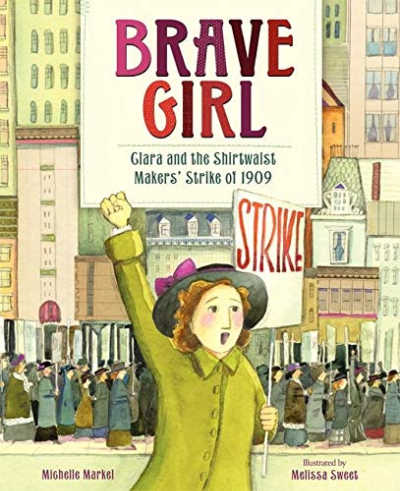
Brave Girl: Clara and the Shirtwaist Makers' Strike of 1909 by Michelle Markel, illustrated by Melissa Sweet
Clara came to NYC dirt poor but full of grit. She worked a miserable, backbreaking job at a garment factory. An extraordinary individual, she taught herself to read and led the largest walkout of women workers in U.S. History, despite being beaten and jailed for participating in labor strikes. This is a valuable story of the history of women workers and the importance of fair labor practices and will still resonate today. Ages 5 and up.
MORE: Picture Book Biographies about Women Activists
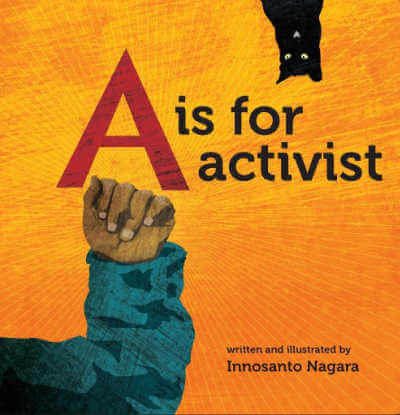
A is for Activist by Innosanto Nagara
A board book that's not just for babies! With a fun sense of humor, this alphabet book introduces kids to the idea that life may not be all about acquiring the latest Thomas Train. The book teaches generosity, compassion, consideration for others. Use the book as a starting point for further discussions about the topics. Counting on Community is the companion book which turns a simple counting book into an inspiring call to action. Ages 2 and up.
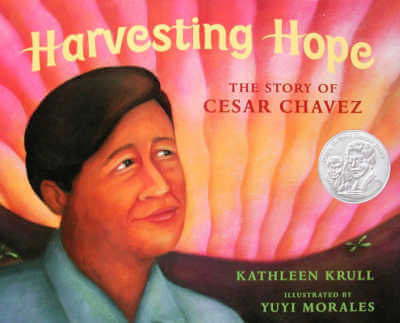
Harvesting Hope: The Story of César Chávez by Kathleel Krull, illustrated by Yuyi Morale
This picture book biography begins with Chávez as a young boy, who was "not a fighter," and follows him as his family leaves Mexico during the drought. When they arrive in California ,the family experiences the hardship, racism and brutal treatment rained down on migrant workers. Chávez was roused to take action and organized a 340 mile peaceful protest march on behalf of farmworkers. Ages 5 and up.
MORE: Books about the History of Labor
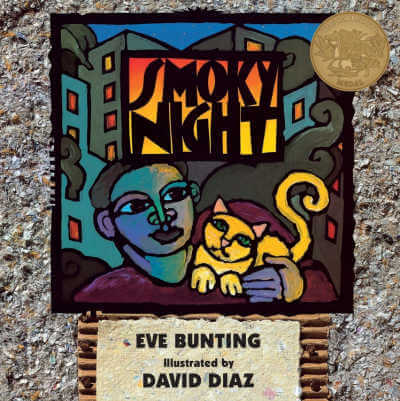
Smoky Night by Eve Bunting, illustrated by David Diaz
Even Bunting wrote Smoky Night in response to the Los Angeles protests and riots in the wake of the Rodney King trials. It is a sensitive story about the effects of urban violence, but the real emphasis in on the importance of seeing the value of one's neighbors as individuals. Diaz's illustrations are gorgeous and evocative. Ages 7 and up.
MORE: Social Justice Picture Books for Kids
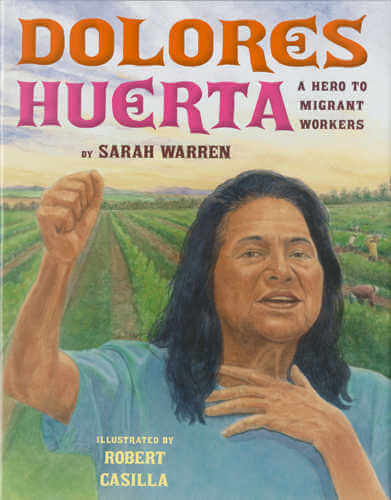
Dolores Huerta: A Hero to Migrant Workers by Sarah Warren, illustrated by Robert Casilla
Warren portrays civil rights leader Dolores Huerta in her many roles, from teacher to parent to protester and more. Her strength and determination to help the farm workers inspired her her to help organize a strike so they could achieve better working conditions and fair treatment under the law. Endnotes supply further information. Ages 5 and up.
Dolores Huerta is one of the fearless women on our women cards coloring page!
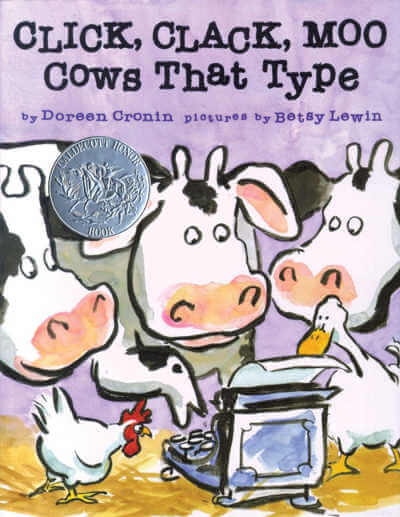
Click, Clack, Moo: Cows That Type by Doreen Cronin, illustrated by Betsy Lewin
If you want to raise kids who won't let their future employers walk all over them, read them this modern classic about a group of determined barnyard animals who persevere to get what they want, despite a grumpy farmer. Ages 3 and up.
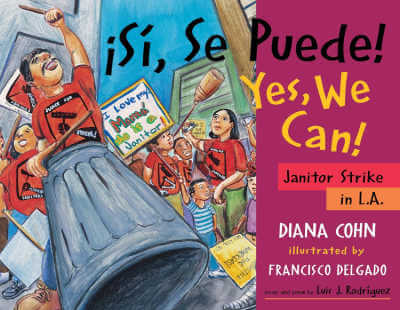
¡Sí, Se Puede! / Yes, We Can! by Diana Cohn
Cohn's book is inspired by a real life janitor strike in 2000. The story centers on Carlitos, whose mother is a night janitor who cleans a skyscraper in Los Angeles. I like the family touches, like when mama tucks Carlitos into bed every night before she goes to work. It personalizes the story so kids will be able to relate to the characters, even if they may never find themselves in a similar economic situation. Mama helps to organize the janitor strike, and a passionate Carlitos who "loves his mama" gets involved. A bilingual book. Ages 4 and up.
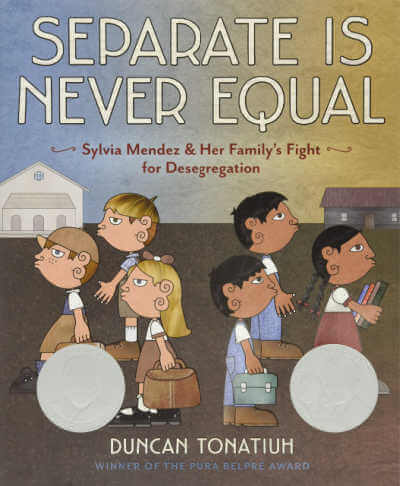
Separate Is Never Equal: Sylvia Mendez and Her Family's Fight for Desegregation by Duncan Tonatiuh
Tonatiuh tells the story of school desegregation 10 years before Brown v. the Board of Education. In 1944, Sylvia's family moved to a new community. When she tried to attend school, she was told that she would have to go to "the Mexican school". Sylvia and her family fight back and eventually win a very important court battle, setting the stage for future desegregation cases. Ages 5 and up
MORE: Picture Books about The Civil Rights Movement
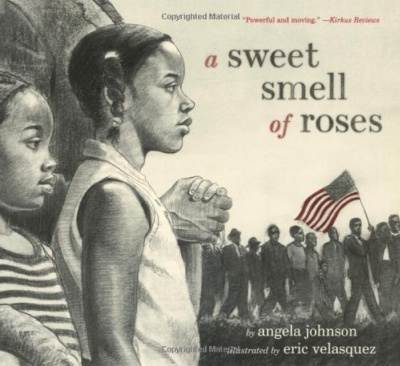
A Sweet Smell of Roses by Angela Johnson, illustrated by Eric Velasquez
A young girl, with her red-ribboned teddy bear describes the experience as she and her sister slip out of their house to join a freedom march. The focus is very much on the sensory experience. They stand, "waist high" in the "bright light", "clapping in time with [their] feet." This is lovely book that emphases how children have been an integral part in civil disobedience and protest marches. Young readers will enjoy picking out the plucky protagonist in the illustrations by her bear's ribbon, which matches the stripes in the flag. Ages 4 and up.
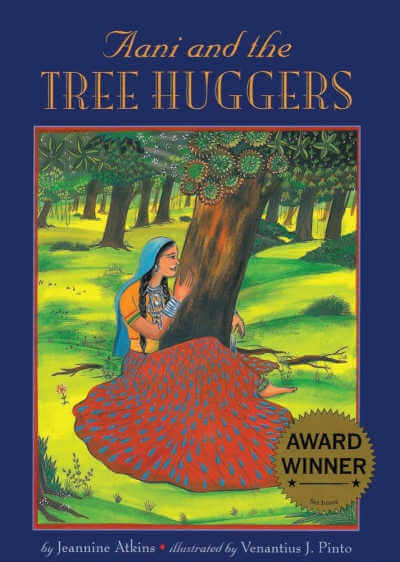
Aani and the Tree Huggers by Jeannine Atkins
In an event in 1970s India, villagers protested the cutting down of their venerated trees by holding on to them. In this story, Aani, a young girl, leads the fight to protect the trees from tree-cutters who have official orders to cut them down. The trees are a source of food, shelter and comfort for the villagers. This is an interesting book to talk to kids about the many forms of protest. It's not always a march or a strike. It could be—literally—tree-hugging. Ages 6 and up.
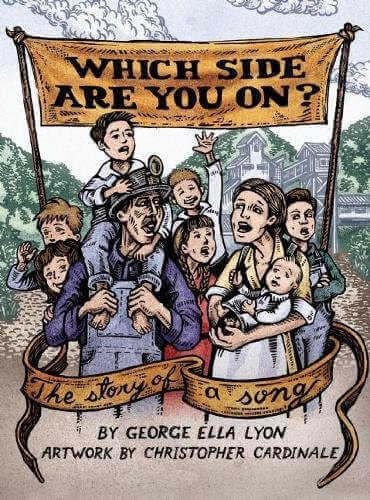
Which Side are You On? The Story of a Song by George Ella Lyon, Christopher Cardinale
Find it: Amazon
Florence Reese wrote the titular 1931 song and it's now a ballad sung worldwide in support of workers' rights. Florence's husband was a coal miner and the story of the coal miners' strike is told through the eyes of Florence's daughter. I recommend this book for ages 8 and up because of the depiction of the gun fire that was rained down on the miners. Nevertheless, it is an important story that deserves to be remembered. Ages 8 and up.
MORE: Books to Inspire Kids to Change the World
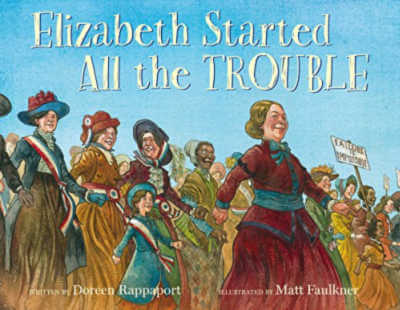
Elizabeth Started All the Trouble by Doreen Rappaport
Find it: Amazon
The book starts with a sort of prologue starring Abigail Adams who issues a warning to her husband that if women were not included in the new laws for the United States they would start their own revolution. The story then skips ahead to 1840 when Elizabeth Cady Stanton and Lucretia Mott start that very revolution. I appreciated that the author included the voice of Sojourner Truth in the middle of the book because it is important to remember that Cady Stanton and the other suffragettes were not fighting for all women's right to vote. Ages 5 and up.
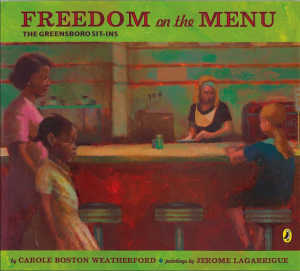
Freedom on the Menu: The Greensboro Sit-Ins by Carole Boston Weatherford, illustrated by Jerone Lagarrigue
In 1960, four black college students sat down at the Woolworth's lunch counter, labelled "WHITES ONLY." The events are told from young Connie's perspective. She sips her soda while standing but her siblings become active in the lunch counter boycott and she helps them make signs. I like that the author still included Connie's youthful desire to just have a banana split, which she finally gets to do—while sitting. Ages 5 and up.
MORE: Big List of African-American History Books for Kids
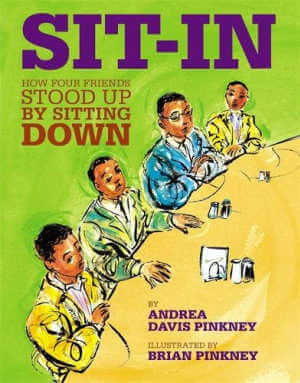
Sit-In: How Four Friends Stood Up by Sitting Down by Andrea Davis Pinkney, illustrated by Brian Pinkney
Here's another story about the 1960 Greensboro lunch counter sit in. I liked this one because of the food metaphors. "At first they were treated like the hole in the doughnut—invisible." "The kids had a recipe, too. A new brew called integration." I love Pinkney's splendidly expressive illustrations, with their swirly lines and colors. Ages 5 and up.
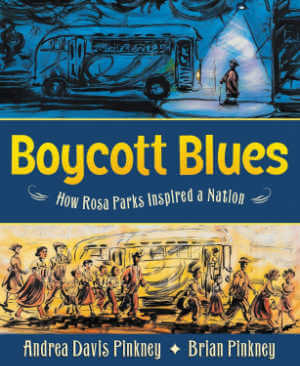
Boycott Blues: How Rosa Parks Inspired a Nation by Andrea Davis Pinkney, illustrated by Brian Pinkney
Pinkney's book tells the story of how the African-American community walked for 382 days rather than ride the segregated busses in Montgomery, Alabama. The rhythmic text and vibrant illustrations, which themselves appear to move beautifully capture the spirit of the amazing individuals who brought change to their community and the nation. Ages 5 and up.
MORE: Check out all our book list topics in the book list index!



Melody says
We also love the "Ordinary People Change the World" series by Brad Meltzer. Both the I am Rosa Parks and I am Martin Luther King, Jr. books have great information about protesting and social justice.
Erica says
Thanks for the recommendations!
Natalie says
The treehuggers book reminded me of Luna & Me - "the true story of a girl who lived in a tree to save a forest." I read it to several classes last year and all enjoyed it.
Erica says
Thank you for the recommendation!
Julie Norkoli says
We've been homeschooling since 2007 and I love your book lists. My husband recently wrote a picture book to help kids learn about protectionism. Johnny's Jelly Bean Tacos - It even rhymes and employs quality vocabulary.
With sales down at his taco restaurant, Johnny Van Socken invents a new delicacy that becomes an instant success: jelly bean tacos! Unfortunately for Johnny, his success poses a threat to some of the local business owners. When the other business owners convince the local government to pass rules to control the sale of jelly bean tacos, Johnny stands up to protect his rights as a businessman, as well as the rights of his customers.
I would love to send you a copy to review. Please let me know if you are interested.